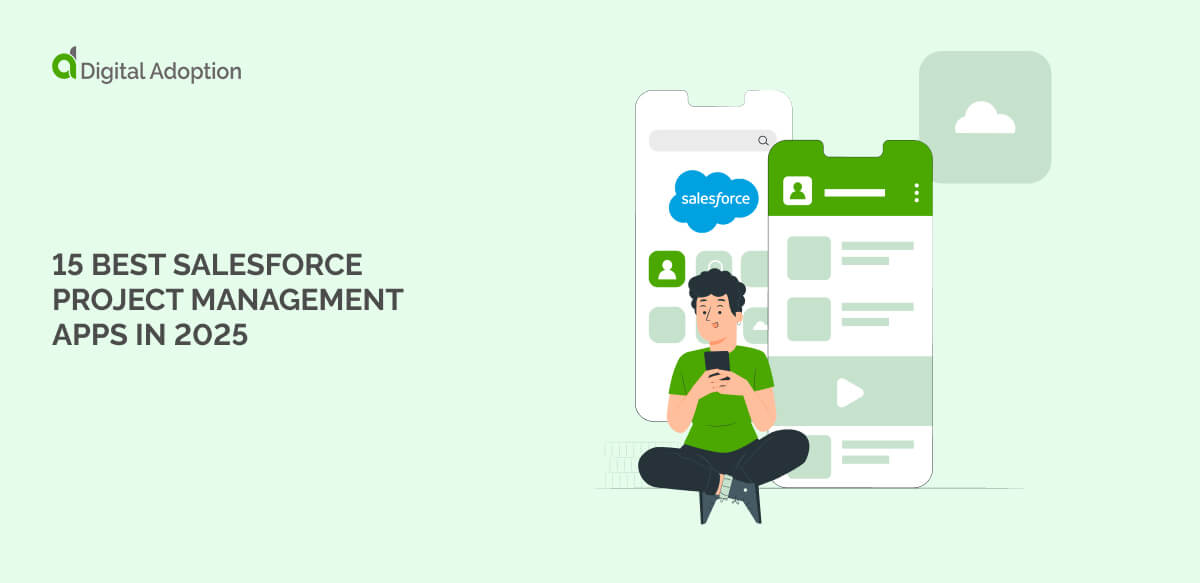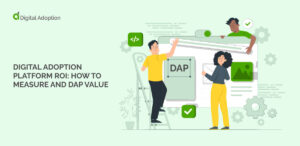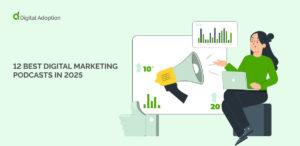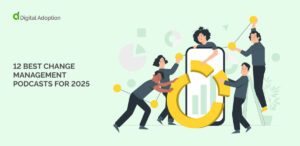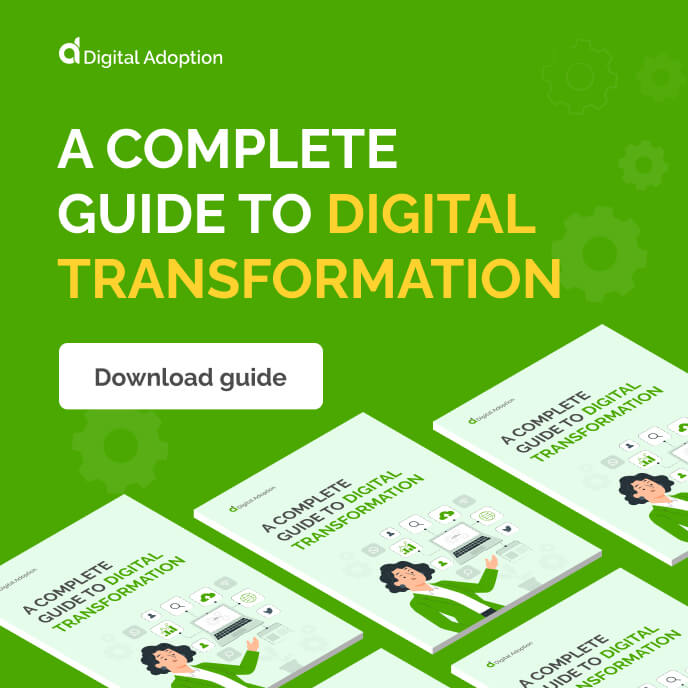Despite boasting solutions across customer data, marketing, sales, revenue, and more, Salesforce doesn’t offer its 150,000 users a dedicated project management tool.
In the digital transformation era, delivering successful project outcomes requires careful alignment of skills, digital tools, organizational planning, and resource management.
While Salesforce tools for project management are not built into the core platform, the Salesforce AppExchange includes an array of Salesforce-native PM tools, among thousands of enterprise-grade cloud solutions.
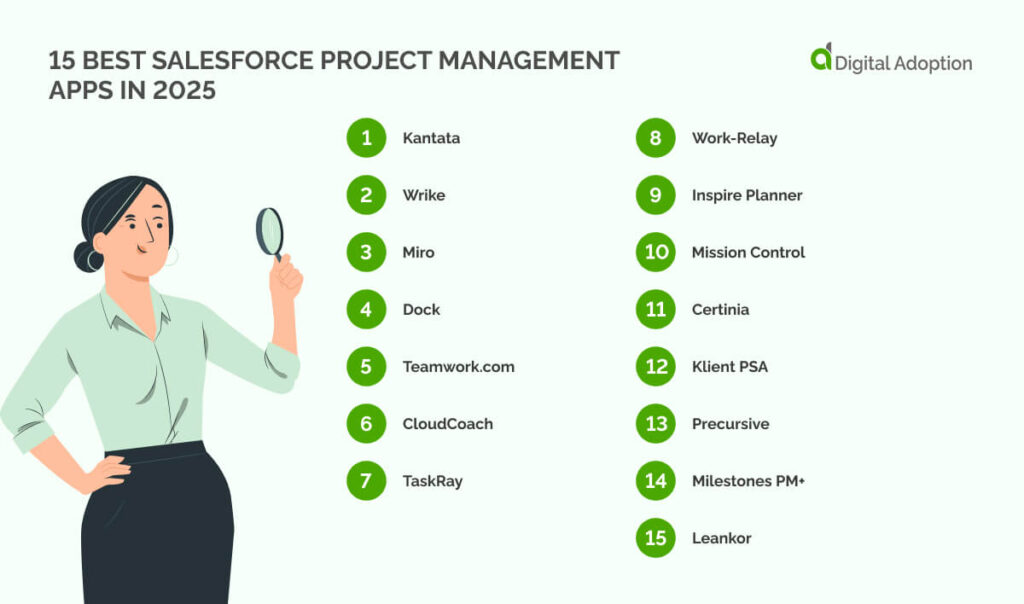
This article will examine fifteen Salesforce-native project management tools that project teams can leverage for handling diverse project requirements. With these tools, teams can collaborate, organize, and utilize their Salesforce data to manage project needs and fulfill deliverables on time and on budget.
1. Kantata
- G2 rating: 4.2/5 (1,482 Reviews)
- Best for: Professional services, creative agencies, IT, and marketing teams needing strong project and resource management.
Kantata is a trusted project management software designed for more predictable and profitable service delivery. With end-to-end project planning in one unified platform, you can compile project components and manage entire portfolios.
Seamless Salesforce integration ensures that project data is accessible and relevant. Kantata’s estimation tools set scope, cost, and timelines early, anchoring delivery to clear targets. Time and expense entries are directly fed into project accounting, ensuring financial accuracy throughout the project execution process.
Portfolio health insights and embedded feedback loops connect performance with continuous refinement. This enables project teams to act swiftly, mitigate risks, and consistently deliver successful project outcomes.
Key features
- Work Management: Create tasks and assign owners with clear accountability
- Project Controls: Plan project phases and align budgets with delivery timelines
- Resource Planning: Manage roles and schedule capacity across teams and projects
2. Wrike
- G2 rating: 4.2/5 (1,482 Reviews)
- Best for: Teams that need advanced reporting and real-time visibility across complex project environments.
Wrike is a versatile project management platform that offers a single source of truth for managing multiple projects and clients. Trusted Salesforce integration ensures uninterrupted data flow between systems, keeping project updates timely and aligned.
Powerful automation features fast-track execution and speed up decision-making. Features like Gantt charts help visualize deadlines and analyze critical paths, while customizable views and dashboards provide live performance tracking.
Share resources across teams, streamline collaboration, and complete tasks on time with tools built for visibility, control, and operational resilience.
Key features
- Resource planning: Allocate capacity with precision and keep workloads balanced.
- Workflow automation: Remove manual steps and accelerate delivery with rule-based triggers.
- Customizable views: Shift between Gantt, Kanban, and dashboards for total project visibility.
3. Miro
- G2 rating: 4.7/5 (8,218 Reviews)
- Best for: Teams that rely on visual planning, real-time collaboration, and interactive project mapping
Miro is a visual project management platform fully compatible with Salesforce. Teams can import Salesforce data to map workflows, plan deliveries, and track pipeline progress in real-time.
Gantt and Kanban boards structure execution, while live dashboards surface performance updates as they happen. Enhanced collaboration supports idea generation, project planning, and shared decision flows on a single canvas.
With mind maps, task tracking, and presentation tools built in, Miro connects thinking and doing without switching context.
Key features
- Live dashboards: Track project performance in real time with synced visual updates.
- Gantt and Kanban boards: Plan timelines and manage tasks with structured, flexible views.
- Real-time collaboration: Work together instantly on workflows, ideas, and project plans.
4. Dock
- G2 rating: 4.5/5 (22 Reviews)
- Best for: Managing collaborative customer projects in one shared workspace.
Dock is a client-facing PM app with swift Salesforce integration that users can rely on for user onboarding and client projects. Salesforce sync keeps deals and customer records up-to-date across workspaces.
The platform offers a streamlined customer portal that consolidates tools for sales, onboarding, and project management in one convenient location. Assign customizable tasks, manage mutual action plans, and securely share proposals and key documents.
With buying signals, custom branding, and centralized content, Dock delivers a white-glove customer experience.
Key features
- Mutual action plans: Work from shared timelines so teams and customers stay on the same page.
- Client portals: Bring files, updates, and tasks into one secure, branded space.
- Custom task management: Assign tasks that align with your team’s digital workflow and track progress as it unfolds.
5. Teamwork.com
- G2 rating: 4.4/5 (1,174 reviews)
- Best for: AI-enabled project management for client-focused agencies
Teamwork.com is an AI-enabled project and resource management app built for client-focused teams. Salesforce users can import project data directly, keeping delivery aligned with client goals.
Manage availability, forecast workloads, and assign the right people using live capacity insights. Flexible budgeting options (fixed fee, time and materials, or retainers) protect margins across project types.
You can even track profitability in real-time, with AI features that offer one-click updates, filter tasks, and flag resource gaps. Built-in communications and approvals handle client feedback without delay.
Key features
- AI-powered planning: Generate tasks, filter updates, and check resource availability instantly.
- Flexible budgeting: Support fixed fee, time and materials, or retainer-based projects.
- Client communication: Manage emails, feedback, and approvals in one place.
6. CloudCoach
- G2 rating: 4.5/5 (160 reviews)
- Best for: Resource and service delivery inside Salesforce.
Cloud Coach is a native Salesforce app for managing delivery, resourcing, and financials in one workspace. Run onboarding processes, PSA, and success workflows directly within Salesforce.
Match roles with skills-based resourcing and track availability in real-time. You can even capture hours with time entry and automate meeting follow-ups.
A highlight is the built-in dashboards, surface timelines, billing, and customer health, so teams can monitor stakeholder activity and project margins without switching tools.
Key features
- Skills-based resourcing: Assign the right people to each project by matching roles, skills, and availability.
- Time entry and meeting automation: Track hours and auto-log meeting actions to keep delivery on pace.
- Dashboards and customer health: Monitor project status, billing, and client sentiment in one real-time view.
7. TaskRay
- G2 rating: 4.3/5 (157 Reviews)
- Best for: Streamlining customer onboarding using reusable project templates, timelines, and automation
TaskRay is a Salesforce-native project management app built for B2B customer onboarding and delivery. It connects Sales and Service Cloud, centralizing work, assignments, and status updates in one secure space.
Automate tasks, eliminate manual processes, and streamline handoffs between teams with ease. The built-in resource optimization also helps match people to projects based on skills and capacity.
With every project tracked in Salesforce, teams move faster, complete more work, and improve revenue, all without adding complexity or risking data ethics or security.
Key features
- Task planning: Manage tasks and timelines with Gantt, Kanban, and calendar views.
- Resource control: Balance workloads with built-in resource tools.
- Automation & insights: Streamline workflows and track progress with live reports.
8. Work-Relay
- G2 rating: 4.8/5 (14 Reviews)
- Best for: Work-Relay is best for managing structured, repeatable workflows across teams.
Work-Relay helps teams manage complex projects that span departments, rules, and deadlines, all within the native Salesforce platform. It’s ideal for work that follows strict steps or requires meeting compliance goals.
You get visual timelines, real-time alerts, and clear handoffs, so nothing slips through the cracks. This is particularly notable in environments where accountability and coordination are crucial to success.
If your projects involve repeatable tasks or multiple teams working together, Work-Relay makes it easier to reduce errors and deliver results with consistency and confidence.
Key features
- Process mapping: Build and manage project flows with visual process maps.
- Role coordination: Assign tasks by role and ensure smooth handoffs across teams.
- Milestone tracking: Stay on top of key deadlines with automated progress alerts.
9. Inspire Planner
- G2 rating: 4.8/5 (19 Reviews)
- Best for: Client services, PS teams, or regulated workflows needing audit-ready task controls.
Built within Salesforce, Inspire Planner enables teams to create task templates that are triggered by opportunity stages. Projects auto-generate, route tasks by role, and track completion within Salesforce records.
Gantt and Kanban views provide live task visibility, while embedded time tracking links hours to accounts and billing. Templates adapt by record type, letting managers replicate workflows across teams.
External users can also collaborate via portal access. This means clients, partners, or vendors can contribute to projects without needing full Salesforce access, keeping everyone aligned without extra admin work.
Key features
- Auto project plans: Launch tasks from Salesforce records.
- Visual tracking: Monitor progress in Gantt and Kanban views.
- External access: Let clients and partners collaborate via the portal.
10. Mission Control
- G2 rating: 4.4/5 (171 Reviews)
- Best for: Salesforce teams managing complex delivery with built-in billing, resourcing, and milestone tracking.
Mission Control works natively inside Salesforce. It converts closed deals into comprehensive project plans, complete with tasks, budgets, and timelines.
Managers can assign work, track time, and view progress all within the CRM. Project data links directly to Salesforce objects, so reports reflect what’s really happening. Role Utilization shows who’s overloaded or free. Built-in finance tools also track hours, cost, and profit.
Ideal for service-led teams juggling project delivery and sales. This tool centralizes planning, task tracking, and customer updates, so everyone works from the same playbook.
Key features
- Auto project builder: Converts won deals into ready-to-track projects.
- Role utilization: Flags underused or overloaded staff by role.
- Native finance tools: Tracks budget, cost, and margin inside each job.
11. Certinia
- G2 rating: 4.1/5 (1,134 Reviews)
- Best for: Enterprise and regulated services teams needing unified delivery, finance, and client visibility in Salesforce.
Certinia PSA Cloud runs entirely on the Salesforce platform. It turns opportunities into projects, resource plans, and billing milestones within Salesforce. The Resource Planner matches skills and availability to tasks before the kickoff.
Time and expense entries are integrated into forecasts and profit calculations for real-time budget oversight. Alerts even flag late milestones or budget overruns on dashboards.
Experience Cloud portals let clients and partners view timelines and submit expenses. It’s a unified system for managing service delivery, financials, and resource planning, without leaving the Salesforce ecosystem.
Key features
- ERP Cloud Connector: Links project costs and billing to Salesforce Finance.
- Resource Manager: Uses live Salesforce roles to match teams to work.
- Engagement Workspaces: Unifies delivery and billing in native Salesforce records.
12. Klient PSA
- G2 rating: 4/5 (71 Reviews)
- Best for: Services teams managing delivery, billing, and resource use entirely inside Salesforce.
Klient PSA is fully native inside Salesforce. It turns won deals into project plans with milestones, tasks, billing, and utilization metrics. Custom templates can initiate standardized work based on the opportunity type.
Teams log time and expenses within Salesforce records, allowing invoicing and profit tracking to live alongside accounts. Built‑in dashboards show margins, utilization, and project status at a glance.
External users access a secure client portal. This means clients can stay informed, submit requests, and collaborate on deliverables, all without needing access to your internal systems.
Key features
- Project kickoffs from deals: Auto-create tasks, checklists, and budgets when opportunities close.
- Time & expense capture: Log hours and costs tied directly to work items.
- Utilization dashboards: View resource usage, capacity gaps, and margin trends in one screen.
13. Precursive
- G2 rating: 4.2/5 (58 Reviews)
- Best for: Consultancies, IT firms, and agencies that sell outcome-based services inside Salesforce.
Precursive PSA works within Salesforce, enabling teams to transform deals into delivery pipelines that track work and billing together, automatically. Project plans feed into resource pools and utilization views, so capacity gaps are obvious before work begins.
Time and expenses log against accounts and opportunities, tying forecasts to earned margin instantly. Notifications alert users when budgets or schedule progress fall behind, helping teams avoid surprises.
If you run client projects from the same system as your sales pipeline, this setup helps everyone stay aligned without needing to juggle multiple tools.
Key features
- Deal-to-delivery linkage: Converts won deals into tracked projects.
- Utilization dashboard: Highlights capacity and workload variance before projects begin.
- Budget alerts: Proactively flag overspend or schedule delays.
14. Milestones PM+
- G2 rating: 4.8/5 (13 Reviews)
- Best for: Teams in strict industries that need full audit records and built-in Salesforce controls for project tracking.
Built entirely on Salesforce, Milestones PM+ lets teams manage delivery, risks, and status updates without ever leaving native records.
Milestones, tasks, and dependencies connect in one place, so delays surface early. Each project stays audit-ready, with risk logs, approvals, and Chatter linked to the same record.
Setup is quick with reusable templates, while real-time dashboards keep execs aligned. Everything updates live, ensuring that reporting remains reliable and convenient.
Key features
- Milestone-based planning: Structures projects with defined goals, dependencies, and timelines.
- Native risk tracking: Logs issues and links them to affected project areas.
- Salesforce chatter use: Enables direct team updates and approvals within project records.
15. Leankor
- G2 rating: 4/5 (11 Reviews)
- Best for: Teams handling complex customer delivery.
Leankor helps companies track delivery using Salesforce as a single system of action, not just a record-keeping system.
Changes in pipeline forecasts update delivery schedules, so revenue timing stays clear across teams. Project status links back to account records, providing sales, operations, and finance with a unified view of the information.
Aerospace, construction, and utilities firms use Leankor to join contract, resource, and billing plans without leaving Salesforce.
Key features
- Pipeline-to-delivery sync: Connects forecast changes to work plans.
- Shared account visibility: Updates project data across all teams.
- Delivery model mapping: Handles long-cycle, high-value deployments.
Which Salesforce project management tools should you choose?
That concludes our roundup of top Salesforce project management apps.
Choosing the right one goes beyond ticking feature boxes. You need a solution that fits your delivery style, supports how your teams work, and integrates seamlessly with Salesforce.
Look closely at how each tool connects with Salesforce objects like Opportunities, Cases, and Reports. Can it handle your governance setup? Does it support digital workflows? Is it flexible enough to match your reporting needs?
Bring in your project leads early, test a few options, and then choose a platform that can scale with you and act as your team’s single source of truth.
The right tool brings sharper visibility and gives project teams the clarity to drive the change control process.
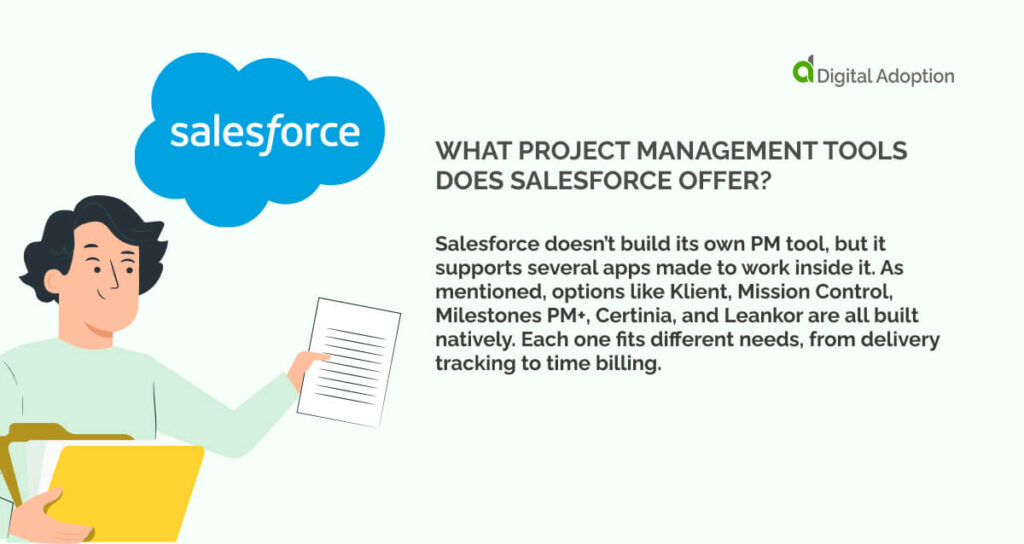
People Also Ask
-
What project management tools does Salesforce offer?Salesforce doesn’t build its own PM tool, but it supports several apps made to work inside it. As mentioned, options like Klient, Mission Control, Milestones PM+, Certinia, and Leankor are all built natively. Each one fits different needs, from delivery tracking to time billing.
-
Are these apps built on the Salesforce platform?Yes. These apps are native, meaning they integrate seamlessly with Salesforce. Updates, task flows, and approvals happen inside the same system your team already uses. You won’t need to juggle tabs or sync data.
-
What features should I look for in a Salesforce PM app?That depends. Do you manage long delivery cycles, client billing, or teams in different time zones? Choose tools that match how your teams already work. If you’re already in Salesforce all day, pick an app that keeps work there, too. It makes everything faster to follow.

